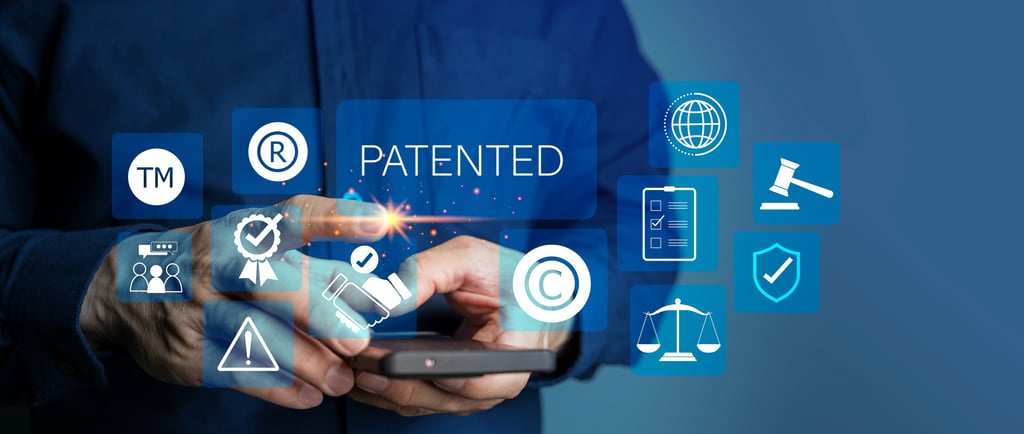Exploring Legal Solutions to Combat Patent Abuse and Litigation Overload
The patent system was originally designed to incentivize innovation by protecting intellectual property. However, the system has become increasingly strained due to the rise of patent abuse and litigation overload. This research examines the challenges posed by exploitative practices within the patent system, their impact on innovation and economic development, and legal solutions to restore balance and fairness in patent litigation.


Understanding Patent Abuse and Litigation Overload
Patent abuse occurs when individuals or entities manipulate the patent system for financial gain rather than advancing innovation. Common tactics include patent trolling—where companies acquire patents solely to sue for infringement—and strategic litigation to suppress competitors. The resulting litigation overload places a significant burden on courts, businesses, and innovators, creating inefficiencies that stifle economic growth and technological advancement.
Key Areas of Focus
1. Patent Trolls and Their Tactics
Problem: Patent assertion entities (PAEs), commonly known as patent trolls, purchase patents with the intent to profit from lawsuits rather than innovation.
Impact: PAEs often target small and medium-sized enterprises (SMEs) that lack the financial resources to fight lengthy legal battles, forcing many to settle even when claims lack merit.
2. Overlapping and Broad Patent Claims
Problem: The issuance of overly broad or vague patents creates legal ambiguity and increases the risk of infringement lawsuits.
Impact: Innovators may face legal challenges even when developing new technologies that should not fall under existing patents.
3. High Costs of Patent Litigation
Problem: Patent lawsuits are among the most expensive types of litigation, with costs often running into millions of dollars.
Impact: These costs disproportionately affect startups and SMEs, discouraging innovation and reducing competition.
4. Impact on Innovation and Economic Growth
Problem: The fear of litigation and the resources diverted to defending lawsuits hinder companies from investing in research and development.
Impact: A less competitive environment stifles technological advancement and economic progress.
5. Judicial and Regulatory Challenges
Problem: Courts and patent offices are overwhelmed by the volume of cases, and existing laws often fail to address modern patent abuses.
Impact: Delays in resolving disputes and inconsistent rulings erode trust in the system.
Implications of Patent Abuse
Legal Implications
Abusive patent practices create a chilling effect on innovation, as businesses and individuals become wary of potential lawsuits. They also overload judicial systems, diverting resources away from other critical legal matters.
Economic Implications
The financial strain of defending against frivolous lawsuits can bankrupt smaller companies and hinder the growth of emerging industries. Over time, this contributes to reduced market competition and innovation.
Social Implications
The erosion of trust in the patent system undermines its original purpose: to encourage creativity and progress for the benefit of society.
Recommendations for Reform
1. Strengthen Patent Examination Standards
Implement stricter criteria for patent approval to reduce the issuance of overly broad or vague patents.
Invest in training and resources for patent examiners to ensure thorough evaluations.
2. Limit Patent Troll Activities
Introduce legislation to penalize frivolous lawsuits and discourage predatory litigation tactics.
Require patent holders to demonstrate active use or intent to develop their patented technology.
3. Promote Alternative Dispute Resolution (ADR)
Encourage the use of mediation and arbitration to resolve patent disputes more efficiently and cost-effectively.
Establish specialized ADR programs for patent cases to reduce the burden on courts.
4. Cap Litigation Costs
Introduce fee-shifting mechanisms where the losing party pays the legal costs, discouraging frivolous lawsuits.
Create financial support programs for SMEs to defend against unwarranted patent claims.
5. Enhance Transparency and Accountability
Require public disclosure of patent ownership to prevent shell companies from hiding their litigation activities.
Establish centralized databases for tracking patent disputes and litigation outcomes.
Conclusion
Patent abuse and litigation overload represent significant threats to innovation and economic development. Addressing these challenges requires a multi-faceted approach involving stronger patent laws, judicial reform, and industry collaboration.
By fostering a patent system that prioritizes innovation over exploitation, we can create an environment where creativity thrives, economic opportunities expand, and the legal system operates more efficiently. The Pendleton Research Center is committed to advancing research and solutions in this critical area, ensuring a balanced and fair approach to intellectual property rights.

